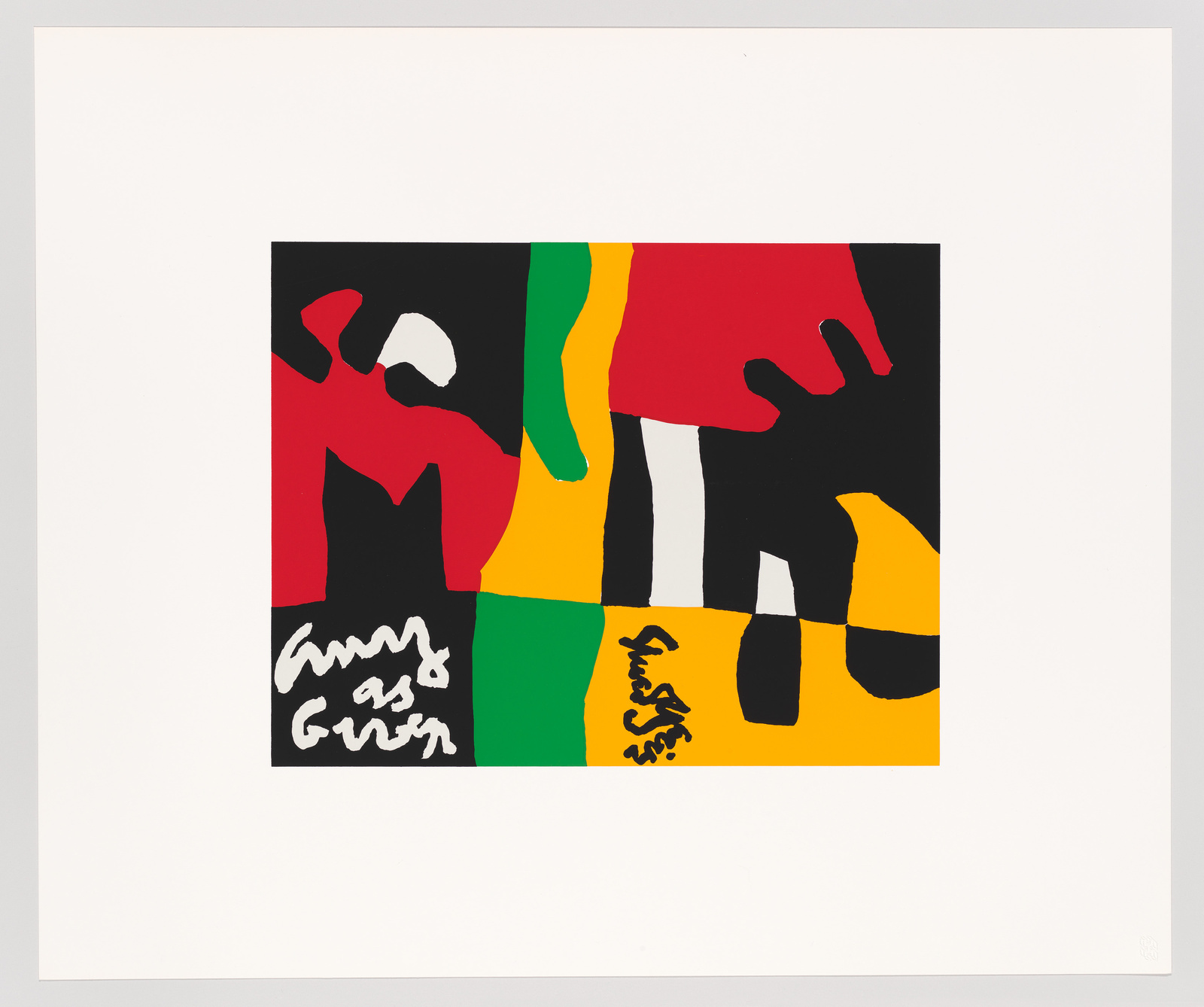0:00
Stuart Davis, Memo #2, 1956
0:00
Harry Cooper: This is a lot tougher for those who are looking for nice color harmonies, for those who are looking for an easy subject.
If we came upon this painting without the other two, we really wouldn't know what was going on, but because we have the other two, we can still read the subject, but we don't have a lot of the cues. It's partly because there are very few lines here.
It's a jigsaw puzzle of shapes that seem to be interlocking, overlapping, a much more limited palette, now reduced really to black, blue, green, red, and white. This is the abstract Davis, really interested in a kind of creased, folded, and very complicated space, full of energy, but not pinned down to any particular subject.
Then we jump ahead to another two years, to the final painting in the series called Memo. I like this one a lot. I think it's my favorite one of the group. A lot of people can't stand it. I know. I've taken surveys!
It's very challenging because it's really two paintings in one, and they don't seem to fit together. For the upper right half, we have a kind of reversed out drawing, white on black, very chunky thick lines. Some elements of scene certainly seem to be set at night. Hard to fathom.
Then at bottom left, really are no lines at all, colored shapes, and we start to get something that Davis loved, that hasn't really been in the series before, which is letters, symbols. So, part of the word "Any," lying along bottom, the figure eight, an X.
Some of these were symbols in his art theories. X is a symbol of expansion. "Any," he said at one point suggests the idea that subject is not important. You can paint anything. You just have to do it right and make it good in itself.
For me, this final painting is something of a declaration that the different elements of painting do not all have to fit together. There is tension. There is a lot of tension in his work, in particular between line and color. Sometimes it's better just to acknowledge it rather than try trying to solve it. [laughs]
